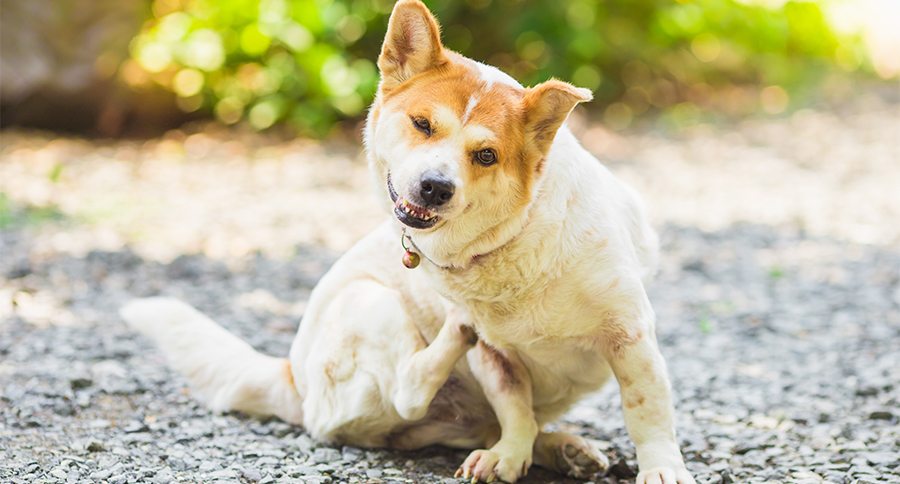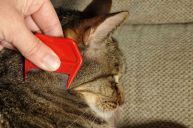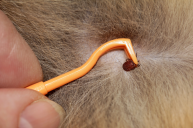It's flea season. Is your house safe?
No pet parent wants to admit that fleas are an issue in their home. But sometimes, you take as many precautions as you can and those hardy little buggers just find their way in.
Controlling a flea infestation takes a lot of commitment, but failing to address it could be catastrophic for all the pets and humans in the household.
Flea control has to be attacked as a multi-modal approach. Follow these steps if you can't seem to get rid of fleas on your pet.
1. Pet Flea Treatment and Prevention
Make sure you take your pet to a veterinarian for flea control prescription. For an active infestation, you'll want to make sure you're treating for all four flea life stages. This will likely involve an oral Capstar tablet to kill existing adult fleas and either a topical or oral prevention, such as Revolution, Comfortis, Advantage, or Trifexis to kill flea eggs and flea larvae and halt the life cycle. You can also ask the vet if they have any recommendations for an effective flea collar or other flea products that will protect your pet around the clock.
Remember, it is best to get pest control products straight from a veterinarian instead of online to ensure quality control.
READ MORE: Bravecto Flea Medication Suspected in Numerous Dog Deaths Worldwide
Prior to applying any topical flea control, wash your pet in a bath with flea shampoo, also best purchased through your veterinarian, and use a flea comb to get rid of any fleas and flea dirt in the fur.
It is extremely important to tackle all life stages or else the infestation will continue indefinitely.

2. Wash Everything
From your furniture, carpet, and bedding, especially pet bedding, to your car seats and rugs, run everything through the washer or steamer. Warm water will help kill all living fleas.
3. Treat the Home
You can find a number of flea control products for the house on the market. You can try flea repel sprays, boric acid, or even Diatomaceous Earth. These products work to either deter fleas or attract and then kill fleas. Spray or sprinkle over the entire house, including corners, hardwood floors, and the baseboards.
Be sure to treat the car, too and empty the vacuum bag to ensure the eggs don't hatch in the vacuum. A flea problem can get out of control quickly so it is important to be thorough.

4. Treat the Yard
You can use flea spray and flea powder in the yard, but note that they will wash away and some can be toxic to the environment. One of the most environmentally friendly ways to treat your yard for fleas is with beneficial nematodes.
Nematodes are microscopic animals that feed on fleas in different life stages and are not harmful to the environment.
Fleas are extremely evasive critters. Pet owners are often offended when they hear the suggestion or see proof that their pet has fleas. Instead of being in denial, pet guardians can address the problem from the get-go and prevent months of a headache—and likely itchiness and sleepless nights from flea bites— while protecting their financial budget.
Remember that oral medications should be discussed with your veterinarian. There isn't a one size fits all and bloodwork may need to be done first so don't skip this important step! Some people opt for over-the-counter products but this isn't always the safest route. And prevention is the best way to proceed so be proactive with a monthly preventative. And sometimes like we mentioned here, fleas simply make their way into our homes no matter what we do!
Food grade diatomaceous earth (DE) is a great option for areas around the house and near the porch or front stoop. This is an effective flea control solution. Get those crawl spaces too!
Treating fleas can be costly if the problem is left alone and flea prevention makes everything easier!
Have you ever had treated fleas in your home? Share your success stories in the comments below.
WATCH NOW: Why Does Your Dog Lick You?




